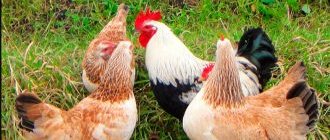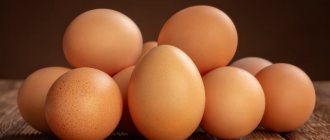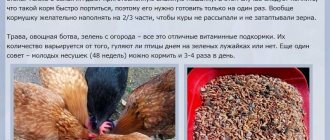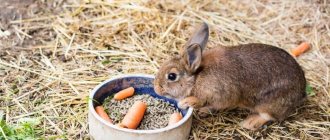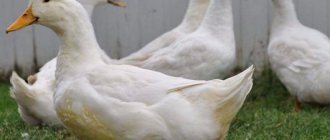Origin
The geographic location of the breed's appearance coincides with its name. At the Blagovarsky breeding plant in Bashkiria, thanks to a coincidence, during experiments to improve the performance of the White Peking duck, birds appeared that stood out among the rest. They differed in color, were strong and beautiful. Breeders strengthened the mutation and soon announced the existence of a new breed - the Bashkir.
In fact, the Bashkir duck is the result of a complex selection process of individuals of the Peking breed. The staff of the breeding plant found out through inspections and tests that in many respects the new breed is superior to the Peking breed. It is recommended for breeding in subsidiary and large poultry farms.
Bashkir colored duck
Varieties of ducks
Ducks are also divided into wild and domestic. Domestic ones have been grown very actively and for a long time as part of agriculture and the development of the agro-industrial complex. An adult male of domestic ducks weighs about four kilograms, a female – three kilograms. The average annual egg production is about a quarter of a thousand eggs. Breeds of domestic ducks are divided into three types: meat, meat and egg, egg. They are one of the brightest representatives of domestic animals with the most delicious meat. Any established and competent farmer is looking for benefits in raising domestic ducks as cheaply as possible. The breed should be economical and unpretentious, with great meat and egg output. They also adapt well to a range of weather conditions and have strong disease resistance. An excellent choice in this regard is the well-known Bashkir duck. Anyone, even a small farmer, will find this breed of duck very attractive to add to their home collection.
Description of the breed
Bashkir ducks are presented in two types of colors - “khaki” and black and white. Females have discreet plumage; males, on the contrary, have complex plumage patterns and colors. In this way, males are similar to wild ducks. The birds are early maturing; the duck acquires its meat value at 1.5 months of life. Then they begin to molt, and their weight increases more slowly.
Recognizable due to its massive but strong body. The paws are muscular, their set is wide, and their size is large. The leg itself is not long. The head is somewhat flattened. The chest protrudes forward. The neck is relatively short, curved outward.
Description of the Bashkir duck breed
The beak of representatives of the Bashkir breed is concave and wide, its plates are bright and well-defined. You can easily find a “marigold”; this is a special growth with which the duck catches the grass. The wings are pressed to the body. The keel is well formed. This is a feature of all flying birds. The legs and beak are a rich bright orange color.
In terms of plumage color, the Bashkir duck is close to its wild counterparts. This, by the way, was the reason why the breed was noticed and began to be studied. From the back to the bottom of the body the feather becomes lighter.
Bashkir drake
The Bashkir duck reacts well to low temperatures. Good rates of development and muscle gain are achieved, among other things, thanks to a strong immune system, so that diseases do not make the ducks frail.
The drake's color, as mentioned above, is brighter. Starting from the 35th day of a male’s life, his plumage becomes black and gray around the head, on top of the neck, and on the tail.
Video - Bashkir ducks and drake
Breed information
By the name of the breed, you can determine the country of its breeding - Bashkortostan. This breed of poultry was obtained by accident: during experiments aimed at improving the characteristics of the White Peking duck breed, breeders noticed among them individuals that differed in external characteristics. This difference was manifested in the fact that the birds were of a different color, stronger in build and had a beautiful appearance. Thus, the Blagovarsky breeding plant, whose location is Bashkiria, soon developed a new breed of duck - the beautiful Bashkir duck, recommended both for breeding in households and on an industrial scale.
Bashkir duck
The Bashkir duck is distinguished by a strong and muscular body with a protruding chest area. The size of the paws is large, the length is short, with a wide location relative to each other. The shape of the head is flattened on top. The length of the neck is short, the shape is concave, with a curve to the outside.
The beak is wide in size, concave in shape, and also has a growth designed for grasping grass. The wing fits tightly to the body.
The keel is elongated and well developed. There are two varieties of Bashkir duck:
- white color;
- colored individuals.
Helpful information. Brown plumage is a sign that such a duck is semi-diurnal.
The color of the plumage is the initial sign of difference between individuals of the Bashkir duck breed. The color plumage of birds has a significant similarity with the color of birds of this species living in natural conditions.
Lightening of the feather is noted from the back to the abdominal region. The color of the beak and paws is bright orange.
The color of the drake is somewhat brighter. On the 35th day after hatching, the bird’s plumage acquires a black-gray tint in the head, upper neck, tail and other parts of the body.
This breed has some features:
- unimpeded movement on snow and ice is ensured due to the absence of nerve endings and blood vessels;
- Duck feathers that have not been treated cannot be exposed to water for many years;
Bashkir duck
- the drake does not make quack sounds;
- the Bashkir duck quacks without echo;
- The cervical region of a duck, despite the short length of the neck, contains a greater number of vertebrae than that of a giraffe.
The female Bashkir duck is distinguished by its temperament, which has a positive effect on the bird’s weight and how many eggs it can lay, regardless of breeding conditions. The results of forums held with the participation of private farms to discuss the peculiarities of breeding birds did not differ in their performance indicators when they were kept in cages, in pens, or in a combined method with grazing.
On a note. On specialized trading platforms, one-day old young Bashkir ducks are always available, which makes the breeding process accessible in household conditions.
Russian poultry farms prefer to use this breed of bird for a number of reasons:
- Bashkir duck has good immunity to infectious diseases;
- the reproductive rate of the breed is at a high level;
- maintaining a bird population does not require unreasonably high financial costs.
The weight of an adult drake is 4 kilograms, a female one is 3.8 kilograms.
Note. The Bashkir duck carcass contains a small amount of fat.
The minimum meat content of adult poultry is 75%. With proper care, the weight of a month-old duck can reach 3.5 kilograms.
The gastronomic properties and structure of the meat can be compared with the best broiler breeds. Due to the absence of a specific smell, meat of the Bashkir breed is one of the most sold in market outlets and supermarkets.
Medical indications for the consumption of this meat product:
- the double content of vitamin A makes duck meat recommended for including a recipe with this animal product in the menu of a patient with skin and vision problems;
- Duck fat contains Omega acids, just like olive oil;
- People suffering from allergies are not recommended to add duck meat or eggs as a component of their menu.
Ducks
The Bashkir breed is a type of meat-egg breed. The egg production rate is determined by the specific color of the bird, of which there are two types:
- individuals with a “khaki” color produce about 200 eggs during almost 300 days in the reproductive stage;
- “black white-breasted” birds lay 230 eggs over the same number of days.
Fluctuations in egg production rates are influenced by a number of factors:
- external conditions;
- dietary features;
- the number of individuals included in the livestock;
- weather conditions.
The average weight of an egg is 75 grams. Placement in the incubator assumes that 80% of the young will hatch.
Duck egg
Features of using duck eggs:
- A 100-gram raw egg contains 185 kcal, which makes this animal product quite high in calories;
- to avoid infection with salmonellosis, it is not recommended to consume raw eggs;
- duck egg is a highly effective component for creating hair masks for split ends and hair loss;
- protein can dry out oily skin;
- A whole duck egg is a good mask for combination skin type.
Varieties
The Bashkir duck is divided into several varieties, which are named by the dominant color in the plumage:
- white. Named so because of the dominant white color in the color. By the age of two, it gains weight of 3.5 kg. Relatively moderate appetite, the representative is capable of laying about 100 eggs in six months;
- gray In terms of weight indicators, it is comparable to white ducks, but egg production is lower - 115 pieces/six months;
- blue. Lays more eggs compared to other varieties - 130 eggs/six months.
Varieties of Bashkir duck
Reviews from Bashkir duck owners
Olga Vidimirova, p. Bobrovichi
She usually kept gray Ukrainian and white Peking ducklings, but then a friend brought ducklings, which they sold to her as Ukrainian ones. But these ducklings have grown really big. I made inquiries, experts said that these were Bashkir colored ducks. I became interested, so I took a couple of drakes for my Ukrainian ones. I chose the color of my ducks, and in the flock, when it became possible to compare, it turned out that the drakes were lighter than my ducks. I left them so that fresh blood could flow in. So, now half of my herd is colored. Overall I'm satisfied. The bad thing is that these ducks, even mixed ones, do not incubate eggs. But I still use an incubator, so brooding is not a problem for me.
Pavel Stepanov, p. Tarasovshchina
I bought Bashkir ducklings, but they grew very small compared to the advertisement. At 4 months they weigh 2.5 kg. I bought it at the Blagovar factory. It seems like a reliable manufacturer, but guess what. I began to rummage around and ask on the forums, they said that I was feeding them incorrectly, or at the factory I bought a “small” line of Bashkir ones, since to obtain meat crosses they keep the egg line and meat line clean, but with less egg production. When crossed, a fast-growing meat cross is obtained. But at the same time, the factory can sell both Bashkir eggs and a pure egg line, which is small; and clean meat, which is large. So I may have just landed on the egg one.
Productivity
An adult male weighs four kilograms, a female – up to 3.7 kg. Meat can be called dietary - the percentage of fat content in it is small and amounts to 2-4%. Net meat weight is at least 70% of the total live weight. Meat also contains a large amount of vitamin A, and fat contains omega-3 polyunsaturated fatty acids.
Already a month after the duckling hatches, it weighs up to 3.3 kg, which makes the meat direction of raising the Bashkir duck attractive. It is worth noting one important marketing point - the absence of a specific smell in meat, due to which it is in demand. In terms of tenderness, it can compete with recognized broiler breeds.
Bashkir duck eggs
The egg production of ducks of the Bashkir breed depends on the variety, that is, the color of the bird. A Bashkir with khaki plumage will lay about 115 eggs over a period of 280 days. The black white-breasted will produce 11 more in the same period of time. Of course, it is impossible to rely only on color in matters of egg production, since this indicator largely depends on the diet, the amount of stress, climatic and weather conditions.
IMPORTANT: The Bashkir breed of ducks is famous for its high level of hatchability of chicks from eggs. The ducklings are strong and quite confidently stand on their paws just a few hours after birth.
The weight of the egg is 70-80 grams; in an incubator you can expect that out of ten eggs you will get eight ducklings. Eggs are high in calories - 185 Kcal/100 g. They are used not only for food, but also for cosmetic procedures based on folk recipes.
Eggs for breeding Bashkir duck
Pros and cons of the breed
When breeding the breed, you should keep in mind that the Bashkir duck has its own positive and negative qualities. Although the latter is purely conditional and applies to all breeds of ducks.
These are qualities such as:
- accelerated metabolism: the bird digests food very quickly and needs a new portion;
- vulnerability of young animals: ducklings cannot tolerate dampness.
Interesting! A duck's egg production depends on the color of its plumage. Oddly enough, females with brownish-green feathers lay fewer eggs per season.
The bird has many more advantages:
- strong immunity to infections;
- rapid weight gain;
- moderate fat content of meat;
- accelerated onset of seasonal egg laying and the instinct of incubation of eggs by the female;
- high duckling hatch rate (80% or more);
- moderate feed costs in terms of the time of maturation of the bird: the duck becomes an adult by the age of 2-2.5 months.
A comparative analysis shows that the advantages of the breed outweigh the disadvantages. Growing and breeding Bashkir duck is justified on any farm.
Content
The bird will feel great both in specially made cages and in pens. The duck room should have a stable average temperature in winter. In summer it shouldn’t be hot in your duck house. A well-designed and made room for the Bashkir duck will not be on the ground itself, but at a distance of 20-25 cm above it.
It is necessary to pay attention to the lighting system. The bird needs light up to 14 hours a day, its intensity is average. A rough calculation can be made according to the principle - 5 watts of incandescent lamp per square meter. The area intended for walking must be fenced, with a sufficient amount of grass.
There is plenty of drinking water. Poultry farmers strongly recommend providing ducks with access to the pond. Make sure that the drinkers are securely fixed - ducks love water and will handle it carelessly.
Prices for mesh netting
Rabitz
Video - Bashkir replacing Beijing
Diseases of ducks and ducklings
In order to prevent diseases and mortality of young animals, you need to properly maintain the poultry house and vaccinate against possible diseases in advance.
Be sure to read:
Wild duck at home: breeding and care, maintenance and feeding
Among Bashkirs the following are most often found:
- viral hepatitis;
- pasteurellosis (cholera);
- aspergillosis;
- salmonellosis.
The following is used in treatment:
- tetracycline (40–50 mg/kg added to the feed for a week);
- oxytetracycline (added to water at a dose of 2–3 mg per unit);
- sulfadimethoxine (150 mg/kg with food every day for 3 days);
- Mepatar (added to water in the amount of 10 g per 5 l);
- Detrivit (2% solution).
When a disease is detected in a herd, it is necessary to isolate and treat sick individuals. The premises must be disinfected and rodents must not enter the area.
Incubator or hen
To breed ducks of the Bashkir breed, you can use either a method that involves purchasing eggs and placing them in an incubator, or hatching ducks using a brood hen.
Preliminary placement of eggs into the incubator
Prices for egg incubators
Egg incubators
If you decide to use an incubator, pay attention to:
- no more than five days should pass between the laying of eggs and their laying. They are stored at a temperature of 9-13o. During storage, eggs should be turned several times a day;
- all eggs with chips, damaged shells and asymmetrical shape are eliminated;
- After disinfection of the eggs, which is carried out with a pale pink solution of potassium permanganate, they are placed in an incubator with a constantly maintained temperature of 38o. The humidity is 70%. The revolution takes place every six hours;
- throughout the second week that the eggs are in the incubator, you need to gradually increase the air supply into it, keeping the humidity levels at 60% and the temperature at 37.8o. It is necessary to turn over every four hours;
- the next week and a half (15-25 days) pass without changes in the microclimate in the incubator. The only thing is that during this period the eggs must be cooled for up to 20 minutes twice a day. The fact is that the egg, due to biological processes, heats up from the inside;
- By day 28, all ducklings should be born. You can help them do this a little by raising the humidity level and increasing the air flow to soften the shells.
Newborn Bashkir ducks
There will be no problems if you decide to choose a natural method. Firstly, it is more appropriate for small private farmsteads; there is no need to build or purchase an incubator. Secondly, the quality of heating and ventilation under the duck is still better than in the incubator. Third, the duck will take care of the ducklings after they are born. She will get them insects and other small food.
The maternal instinct of the Bashkir duck breed is excellent. On breeder forums, people describe situations where a duck, getting wet in the rain or other unfavorable conditions, does not leave the nest. There is only one warning - you need to take a closer look at the health of the brood duck and her mood. Although ducklings of the Bashkir breed have a developed, powerful immune system and hatch strong and hardy, they can still become infected from a mother hen duck.
Diseases and methods of combating them
If Bashkir ducks are provided with proper care and proper nutrition from the moment of birth and throughout their lives, they will not get sick. The main thing is that the birds are not kept on dirty bedding, and that they have access to a body of water.
The diet of ducks must include green food and finely chopped vegetables. In order to prevent digestive problems, it is recommended to give grain in crushed form.
Main diseases of Bashkir ducks and treatment:
- bacterial infections and coccidia - immediately after hatching, in the first 5 days of life, ducklings are given a solution of the drug "Trisulfone" (1 gram of medicine per liter of liquid);
- viral hepatitis - in unfavorable areas, vaccination is given on the 2nd day of life and revaccination on the 60th day;
- vitamin deficiency, lack of vitamins, slow development - from the 6th to the 10th day of life, ducklings are given the drug “Biosupervit” (1 ml of product per three liters of water);
- bacterial intestinal diseases - for ducklings from the 7th to the 15th day of life, the antibiotic “Biovit 80” is added to the wet mash once a day at the rate of 6 grams per feed for 100 chicks;
- parasites (helminths, mites, lice) - on the 41st day of life, ducklings are given the drug “Promectin” (1 ml per liter of water).
To prevent diseases, it is advisable to carry out preventive and sanitary measures. The main thing is to keep the birds in a clean house. Before placing young animals, the room must be disinfected with bleach, washed, and whitewashed the walls with lime. It is recommended to lay only straw on the floor. It is advisable to change the litter every day. If there are rodent holes in the house, they need to be concreted. In the walking area and in the room where Bashkir ducks are kept, it is recommended to place traps for flies and ants.
Breeding specifics
As soon as the ducklings hatch in an incubator or under a mother duck, they are moved to a pre-prepared and equipped room. It should be bright and have an artificial lighting system. Until the ducklings of the Bashkir breed are 20 days old, they are kept at temperatures up to 30°. The floor in the duck house must be warm, this is an important condition.
Twenty-day-old Bashkir duck chicks
When the birds turn 22 days old, the heating level is reduced, bringing the temperature to 16-18o. At the same time, these days you can allow the ducklings and their hen to go for walks. The best place for such a promenade would be a pond located nearby. If there is no natural lake, spare no effort and dig an artificial pond. Its presence will have a positive effect on the development and productivity of your Bashkir ducks.
Ideally, daylight hours for ducks should be regulated, even when they grow quite large - until they are five months old. From the third week, ducks need lighting for 10-14 hours a day. When ducks are 10 months old, they should have 15 hours of daylight.
Ducklings, like their parents, are unpretentious and can eat the same food as adults. Most often, the entire brood survives until the age of seven weeks (at this time the ducklings gain up to 70% of their weight and can already be slaughtered). This happens, of course, provided that the content is correct.
Features of poultry keeping
Since the Bashkir duck is considered a quickly maturing breed, by 2.5 months of life it has fully gained its main weight, and by this moment the meat has maximum nutritional value.
Advice. When the bird reaches 4 months of age, weight gain stops abruptly and the duck begins to molt. It is simply not practical to keep the breed in question on the farm for longer than the specified period of life.
Unlike chicken, duck has a slightly different type of intestine and its metabolism is much faster; accordingly, food goes through the entire processing cycle very quickly. The principle of feeding is quite simple: it is necessary to feed the ducks 2-3 times a day, observing a strict regime. So, in the first half of the day, it is advisable to give preference to various wet mash, and in the evening (immediately before bedtime) it is better to feed the bird with sprouted grain (it will give the bird not only a feeling of fullness, but also useful microelements). The bird is very fond of various kinds of root vegetables (they should be given in crushed form), silage, bulky and green food.
The duck needs to be fed 3 times a day
In the cold season, the duck can be given cabbage, pumpkin and combined silos, silos made from root crops. Birds of this breed readily eat combined silos consisting of the following components: grass meal, cabbage and its leaves (ratio 1:3:6). Such feeds have the best effect on the general well-being of ducklings and the egg production of adult ducks.
If duck breeding is carried out solely for the purpose of obtaining high-quality meat, the bird should be given a lot of granulated feed containing microelements and vitamins (this will allow for maximum weight gain and excellent egg production of large eggs).
Advice. Bashkir ducks must have access to fresh water, every day. The water in drinking bowls should be changed several times a day to prevent it from becoming clogged. On average, one bird needs about 2 liters of water per day.
As for the room where Bashkir ducks will live, grow and lay eggs, it should be comfortable, despite the unpretentiousness of the bird. Make sure that the room is spacious and at the same time warm enough (not lower than +15 degrees), but in no case damp (a simple ventilation system will help prevent the appearance of dampness), otherwise this may lead to the appearance of diseases and deterioration of plumage. In the cold season, a room insulated only from the outside will not be enough for the ducks to live a full life: it is necessary to additionally use heating devices.
Feeding
Bashkir ducks happily feed on everything they can find in the yard and during grazing and walks. But it is better to control this process. Birds should not be allowed to become obese, as they tend to gain excess weight. Remember that the meat of this breed is valued, among other things, for its dietary properties, that is, its low percentage of fat content.
IMPORTANT: Add fine gravel to the feed.
Ducks will not be able to eat only pasture, so the food prepared by you is given three times a day. It is recommended to give liquid mixtures in the morning and lunchtime, and grain at the end of the day. If the duck goes for meat, granular feed is added to its diet. They do this starting from the second week of life.
Feeding the ducks
The first week you should feed up to eight times a day, then four. It is considered necessary to add gravel crushed to grain size. Until the ducklings are ten days old, it is good to feed the chicks with crushed chicken eggs mixed with cottage cheese and a mixture of whey and bread crumbs.
Starting from three weeks, they begin to strengthen the diet with roughage. Grass meal and silage are added starting from the seventh week. Adult ducks of the Bashkir breed should consume 45% grain and 55% feed. In the mixtures you make yourself, include some minced meat and fishmeal.
Products that are suitable for feeding the Bashkir duck:
- peas. It must not be overripe;
- corn grains;
- root vegetables, for example, Jerusalem artichoke;
- wheat and, as a vitamin supplement, sprouted grains;
- special feed yeast;
- fish and herbal meal;
- chalk and small gravel;
- compound feed.
Maintenance and care
For young animals
Bashkir ducklings are strong: they stand on their feet within a few hours after birth and have strong bones. But breeding at home requires a number of requirements.
As soon as the ducklings get out of the eggshell, they need to be moved to a prepared warm room. It should have artificial light, and until the ducklings are a month old, maintain the temperature at 30 degrees. To do this, keep the floor warm (especially in winter).
When the birds are 22 days old, you need to lower the room temperature to 17 degrees. From these days on, you can allow the ducklings with the hen to leave the room and go for a walk.
The best place to go outside would be a miniature pond. If your site doesn’t have one, try creating it yourself. This has a beneficial effect on the physical development of Bashkir ducklings. A little later, begin to regulate the daylight hours in the room: from the third week, turn on the lamps for 10-14 hours. After 10 months, extend it to 15.
Like their parents, ducklings are unpretentious in their diet. They can be fed the same mixtures that you give to adult Bashkir ducks. But it’s a good idea to add greens, unsweetened cottage cheese and chopped boiled chicken eggs to the diet of little Bashkirs.
With proper maintenance, the entire duck brood survives to the minimum slaughter age. Usually by this time Bashkirs gain 70% of their adult weight.
For adult ducks
Bashkir ducks are unpretentious. They easily adapt to different climatic conditions, but there are recipes for creating comfort for these birds:
- Bashkir ducks happily eat whatever they find in the yard, but their diet needs to be regulated. Give them food in a timely manner three times a day, but do not allow them to gain excess weight. Usually in the morning and at lunch they give semi-liquid mixtures, and in the evening - solid food, i.e. grain mixes. The following are suitable for feeding Bashkir ducks: silage, corn grains, Jerusalem artichoke, special purchased feed, feed yeast, grass meal and unrotted peas. It is acceptable to add chopped carrots and heads of white cabbage and pumpkin pulp to your food. These products are especially useful in winter.
- Add miniature gravel to the feed. It facilitates the digestive processes of Bashkirs, as it grinds some plant tissues inside the stomach. Do not forget to enrich feed mixtures with minerals and vitamin complexes for poultry.
- Provide birds with access to clean water. Firstly, Bashkir ducks quickly clog their drinking water, and secondly, they need 1-2 liters of water per day.
- Change the litter every three days. To prevent dangerous infections from appearing, try to clean the walking area as well.
- Provide your ducks with adequate lighting. The total daylight hours in their pen or house should be about 15 hours. The light in the duck space is maintained by conventional lamps, which consume 35 to 45 watts.
- Watch for temperature changes, protect birds from through gusts of wind. Please note that in winter the temperature in the room with ducks should not fall below +7 degrees Celsius.
- Maintain an optimal humidity of 60% or 75%, depending on whether the pen is dry or dry. For the greatest ease of care, equip the house with artificial ventilation.
- To protect Bashkir ducks from rodents, raise the floor by 25 or 30 centimeters and cover it with special materials that pests cannot chew through. Place duck nests near the walls so that they can be easily accessed. Try to seed the run area with grass and give the ducks access to an open source of water.
Secrets of cultivation
Ducks tolerate low temperatures well (within reasonable limits, of course). They can suffer greatly from the heat. Watch the behavior, here is a hint in order to understand when the temperature in the coop needs to be lowered:
- the beak is open;
- lack of interest in food;
- drink often and a lot;
- wings lowered.
Another point is to ensure that the bedding in the duck room or cage is fresh and dry. Waterfowl splash water heavily, the litter moves, and microorganisms multiply in it. Ventilation and airing should be draft-free.
Conditions for productive keeping of the Bashkir duck
Conditions of detention
Bashkir ducks live in cages and pens and quickly adapt to new conditions. Under comfortable conditions, the rate of egg production and meat productivity increases. A prerequisite is to maintain a constant temperature in the duck house, especially in winter. Poultry do not tolerate drafts and need constant access to water.
Ducks do not need artificial or natural ponds to swim regularly. Water is necessary for wetting and cleaning feathers and drinking. Birds' wings do not get wet after bathing.
Feeding the Bashkir duck
Poultry are unpretentious eaters. They have a shortened stomach and accelerated metabolism, so they should have three meals a day. 2-3 kg of feed is needed per 1 kg of growth. By 2-3 months, birds weigh 2.5-3 kg and are ready for slaughter.
The basis of the diet is a grain mixture, silage, hay, dried grass, chopped vegetables, boiled root vegetables. To avoid vitamin deficiency, include feed and mineral supplements in your menu. The presence of crushed chalk, gravel or sand is required.
Birds quickly gain weight from bread, so give it to Bashkir ducks in small quantities, especially before slaughter.
Be sure to control birds' access to water. A duck drinks up to 2 liters per day. The water should be fresh, update the drinking bowls regularly. If mold or algae appears, clean and disinfect it.
Read the article on our website: “Review of drinkers for ducks and instructions for their manufacture.”
The bird needs a regime:
- before lunch – wet mash of cereals and mixed feed;
- after lunch - dry food, silage and hay.
Give the ducks a fresh portion of food each time. Stagnant and sour feed causes digestive problems, dysbacteriosis, intestinal infections, and can lead to the death of poultry.
Read about the rules for feeding ducks at home here.
Poultry house arrangement
When arranging a poultry house, avoid dampness and drafts. Install the structure at a height of 0.3 m above the ground. This way the floor in the poultry house will be warmer, and rodents and harmful insects will not get to the poultry.
Basic requirements for the housing of Bashkir ducks:
- Place the nests away from the entrance, since the bird is very afraid of drafts and gets sick more often.
- To make nests, use wooden crates and boxes; avoid plastic structures.
- Place feeders in the poultry yard, otherwise sloppy ducks will spill food indoors. In this case, the wet mash becomes moldy and can cause illness in the poultry house inhabitants.
- To prevent ducks from spilling water, firmly fix the drinking bowls. Make sure each bird has its own drinking container.
- For high fertility, adjust the lighting. For a room of 10 sq. m required power – 50 W. For high egg production, the daylight hours should be 14 hours.
- Ensure high-quality ventilation of the room, otherwise bacteria multiply in stale air and the fertility of ducks decreases.
Features of care
Clean the house daily. In a dirty room, birds get sick more often. Each time, give the ducks a fresh portion of food and update the drinking bowls. Cleanliness is the key to the health and fertility of poultry.
Set up a walking and feeding aviary near the poultry house. Sow it with clover and alfalfa, and arrange an artificial pond nearby with fresh grass on the shore. Graze your birds daily to help them gain weight faster.
In winter, lay a bedding of straw, sawdust or peat on the floor to prevent the birds from freezing. Keep the bedding clean and dry, otherwise the Bashkir duck becomes lethargic, eats poorly, and gets sick more often.
Advantages and disadvantages
The popularity of the breed is due to its large number of advantages and few disadvantages.
Advantages:
- the hatchability percentage is high and reaches 80%;
- endurance;
- not picky about temperature and diet;
- strong immune system and disease resistance;
- good acclimatization and adaptive characteristics;
- beneficial maintenance for meat purposes - the duck gains weight very quickly;
- dietary indicators of meat.
Flaws:
- love to eat, which if uncontrolled feeding can lead to obesity;
- demanding access to clean drinking water and dry, fresh bedding.
Features of feeding "Bashkirs"
The Bashkir breed does not require special feed. These birds have a shortened intestine, therefore, the metabolism, compared to chickens, is accelerated by one and a half times. Birds require three meals a day.
The poultry diet includes the following products:
- grain mixtures for poultry;
- hay and other grass;
- thermally processed vegetables: beets, carrots, turnips, potatoes and other root vegetables;
- feed;
- table scraps, unless they are spoiled.
The last point is extremely important.
If the food is expired or fermented, it will cause severe poisoning in the birds. A fatal outcome cannot be ruled out.
When introducing bread into your diet, remember that the Bashkir colored duck, like its relative the white-breasted duck, is prone to rapid weight gain. Therefore, give your pets flour only as a rare treat.
Disease Prevention
The immunity of ducks of the Bashkir breed is really strong. But even that may not work sometimes. Therefore, there are a number of rules approved by poultry farmers. If you stick to them, the risk of your ducks becoming infected will be minimal.
- Before moving ducklings into the room, it must be completely disinfected. This is best done by treating with caustic soda or hydrogen peroxide (never together), followed by whitewashing with 20% lime.
- The litter is kept strictly dry, it is always fresh and changed every two days.
- There are vaccines for a number of diseases. If you have any suspicions or concerns, contact your veterinarian about vaccination.
- Chicks of different ages are not kept in the same flock.
- Keep an eye out for the ducks. It is not difficult to identify a sick individual: she is lethargic, she sways, she has apathy and lack of appetite. Such ducks need urgent isolation to avoid infecting everyone in the yard.
- If an epidemic nevertheless begins, you need to contact a veterinarian, he will be able to reduce the number of patients to a minimum.
Health of Bashkir ducks
Diseases
Bashkir ducks have stable immunity. If you follow the rules of care and feeding, you don’t have to worry about the health of the birds. Poultry also gets sick.
List of common diagnoses:
- Avitaminosis. The disease is associated with a deficiency of vitamins and minerals. The plumage is thinning, the ducks become lethargic, eat poorly, and do not gain weight.
- Cloacite. Inflammation of the mucous membrane of the cloaca due to a deficiency of vitamins A, E and D, microelements.
- Prolapse of the oviduct. Severe diarrhea is replaced by prolonged constipation, digestion is disrupted.
You should also be wary of infectious diseases in the poultry yard:
- Aspergillosis . Fungal disease. Most infected ducklings die, and the clinical outcome for adults is favorable.
- Bacillary white diarrhea. This is a salmonella infection. Newborn ducklings are more likely to get sick and die 3 days after infection.
- Rhinitis. A runny nose infects the entire school and is quickly transmitted from sick ducks to healthy ones.
- Typhus. A disease of adults; ducklings are extremely rarely affected. Breeders isolate infected birds and slaughter them.
- Viral hepatitis. Ducklings up to 2 weeks of age are prone to the disease. Infection occurs from a sick individual - through feces, food and water.
- Coccidiosis. The disease develops when the rules for keeping ducks are not followed, and is especially dangerous for babies under 2 weeks of age.
Read more about common duck diseases here.
Disease Prevention
Despite a strong immune system, it can also fail. To maintain the health of the duck and the size of the school, follow these preventive measures:
- Disinfect the room before moving the ducklings.
- Ensure bedding is dry, clean and fresh.
- Carry out preventive vaccination of ducks according to age.
- Relocate the sick duck in a timely manner, otherwise it will infect the entire school.
- Monitor the freshness of food and drink, introduce new food ingredients according to age.
Raising ducklings
After birth, the ducklings, together with the hen, must be moved to a specially designated place with special conditions for temperature and lighting. For the first 5 days, the bedding in this place should retain heat; a temperature of 300C will help to adapt to new conditions.
As they reach 3 weeks of age, the air gradually cools to 220C, and by 4 weeks it levels out at 18-200C. An indicator of a correctly selected regime is the behavior of ducklings. Inactivity and crowding indicate hypothermia in ducklings.
An open beak, lowered wings, sluggish response to food and increased water consumption indicate the need to lower the temperature.
For the first 7 days, provide 24-hour lighting for the ducklings. Starting next week, we reduce the duration by 1 hour every day, bringing it to 9 hours a day. Such daylight hours are acceptable until the end of growing individuals.
We suggest you read: What are the names for Chihuahua boys?
The lighting intensity near the feeder, at the beginning, is 40 lux. Gradually reducing this value, do not forget about the ducklings’ nighttime meals, for which we leave a dim (3-5 lux) light bulb on at night.
Keeping ducks in an aviary
The duck splashes water heavily when drinking water. Take care to change the litter, ensuring it is constantly dry and loose. Replacement occurs every 2-3 days. A persistent smell of hydrogen sulfide in the housing area for young animals is unacceptable. Provide ventilation and airing, eliminating drafts.
Previously, the unpretentiousness and resistance of the Bashkir breed to unfavorable external factors was discussed. It is easier to prevent a disease than to treat it. This rule also applies to ducks of this breed.
Follow the following rules to ensure that caring for this bird brings joy and positive emotions.
- Strive to keep poultry bedding dry and the holding area clean. Before the bird appears, treat the room with bleach and caustic soda. Dry for 3-4 days. Then whitewash with a 20% lime solution 2-3 times.
- In case of home hatching of ducklings or uncertainty about the integrity of the supplier of day-old young animals, contact a veterinarian for help in vaccination to prevent major diseases.
- Do not keep ducklings of different ages in the same pen or room. Separate them until the younger ones get stronger and acquire sufficient resistance to infections and diseases.
- Pay attention to pets. An individual with lethargic behavior, apathy and inactivity is sick. She usually has ruffled feathers, drooping wings and an unsteady, unsteady gait. Isolate sick birds as early as possible from other healthy birds.
- If you suspect a deterioration in the condition, contact a veterinarian immediately, who will help preserve the stock of the poultry yard and minimize the negative consequences.
It is possible to raise a duckling without a mother, but only by providing it with quality nutrition and maintenance.
As soon as the chicks hatch, they are placed in a special cage, in which the temperature is maintained at 28–30 degrees using a regular blue lamp or a special red lamp. Immediately after the chicks have dried, they are given their first food, which is a hard-boiled finely chopped chicken egg.
In warm weather, ducklings from the age of 2 weeks are released into a fenced range. It should have sunny and shady areas. Young birds can be released to adult birds after they have fledged. From this moment on, Bashkir ducklings can be fed in the same way as adult birds - 3 times a day.
With the right approach, raising young animals is not difficult and gives good results.


